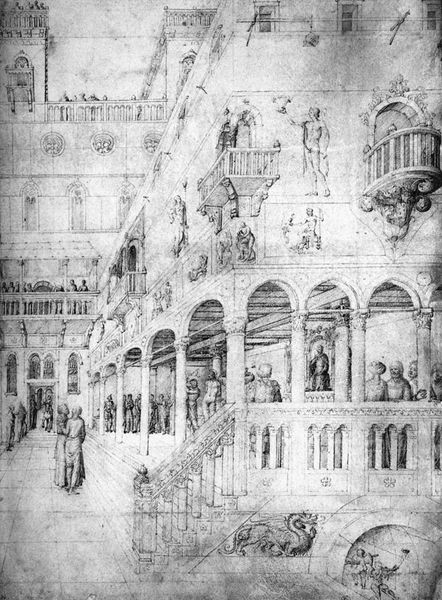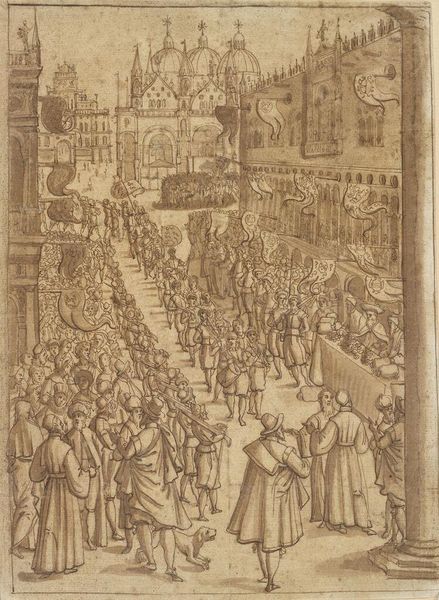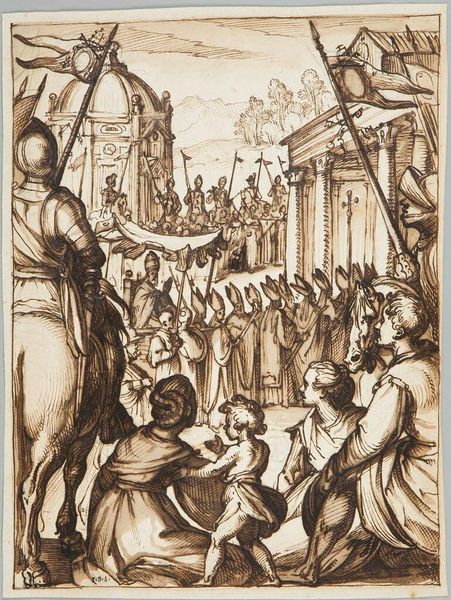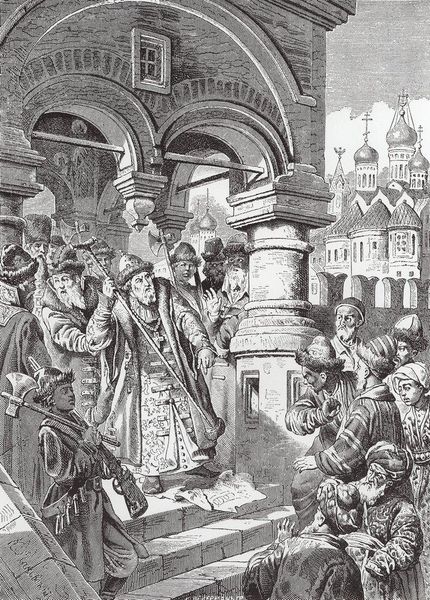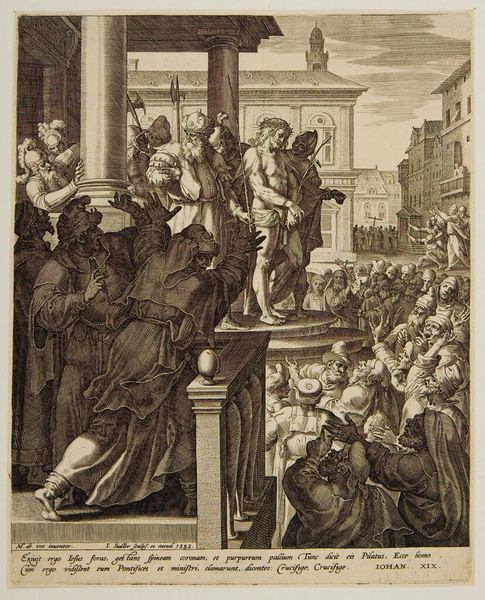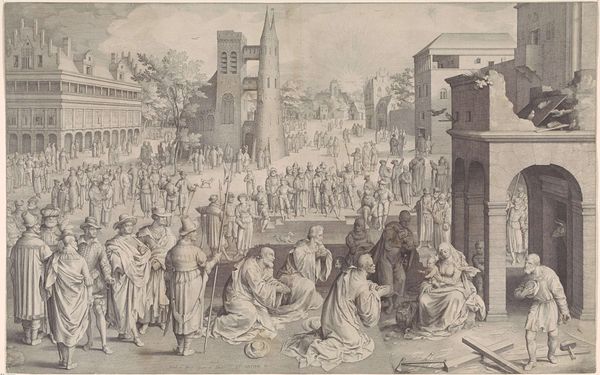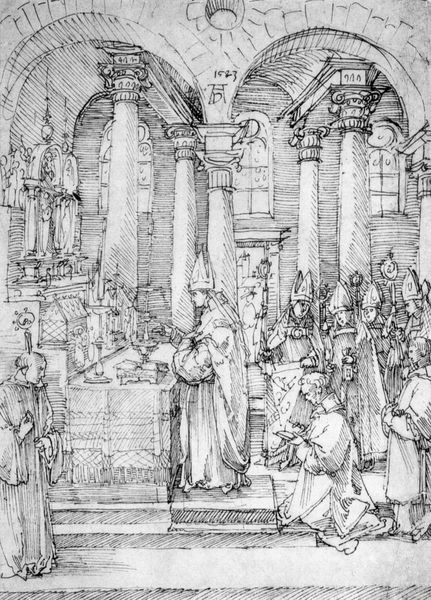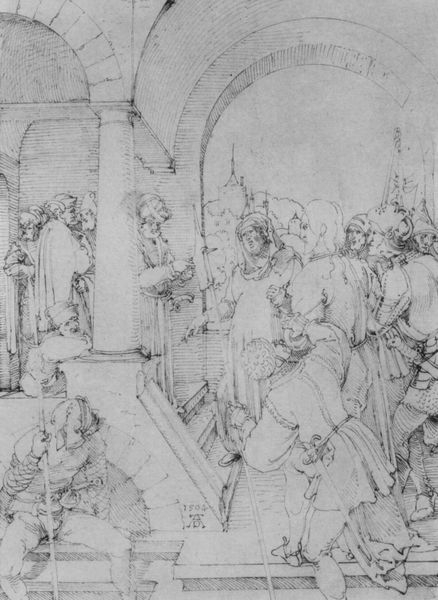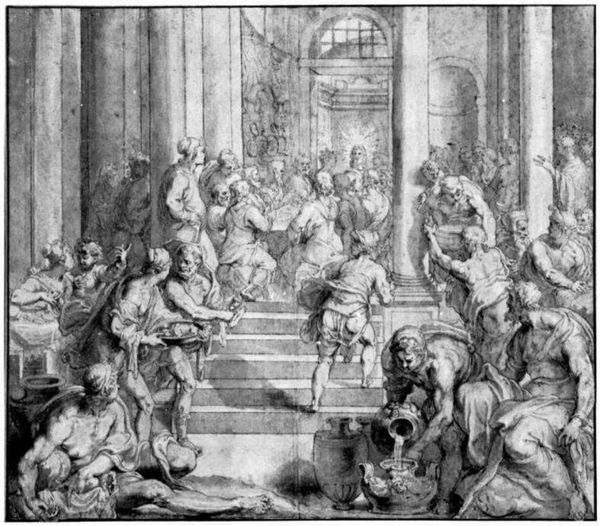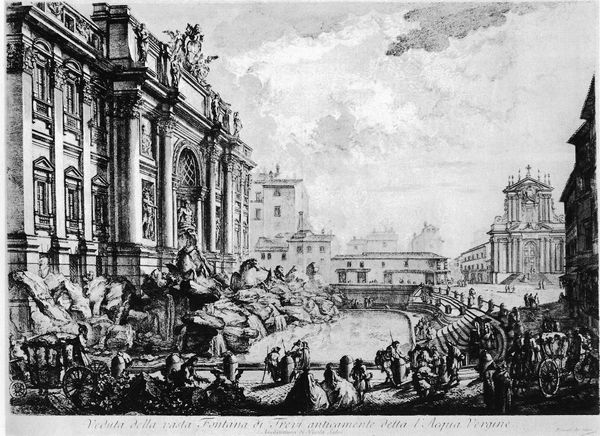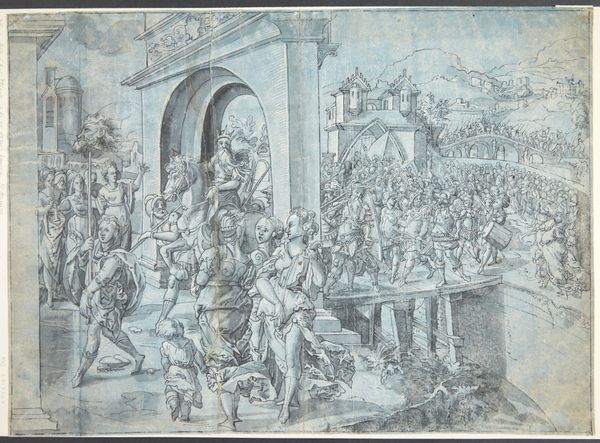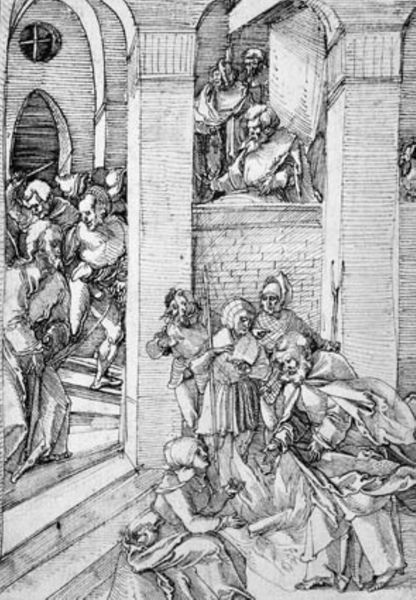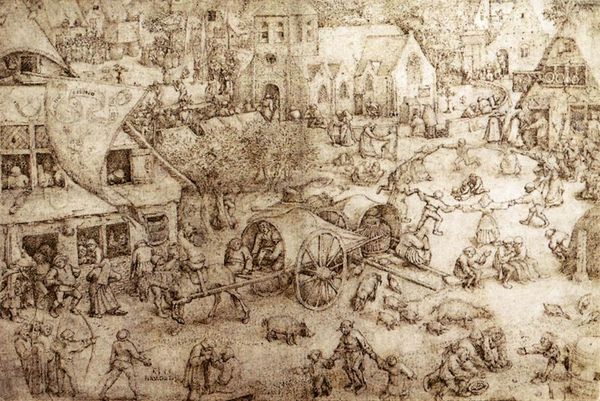
drawing, ink, pen
#
drawing
#
narrative-art
#
pencil sketch
#
figuration
#
11_renaissance
#
ink
#
famous-people
#
pen-ink sketch
#
pen work
#
pen
#
cityscape
#
history-painting
#
academic-art
#
italian-renaissance
Copyright: Public domain
Curator: What strikes me first is the incredible detail in this pen and ink drawing; a work titled "The Triumph of Vespasian and Titus" by Andrea Mantegna, dating back to around 1500. It is currently housed at the Louvre in Paris. Editor: My initial reaction? Overwhelming. Look at the density of the lines, the sheer number of figures. It’s a marvel how Mantegna manages to convey a sense of chaotic movement with such a controlled medium like pen and ink. You can almost hear the crowd. Curator: Indeed! Mantegna was deeply influenced by Roman antiquity, and this piece, being a history painting, demonstrates that. It's a narrative artwork reflecting the grand triumphal processions celebrated by Roman emperors, which in this case are Vespasian and his son, Titus. You've got figures filling the space, from dignitaries and musicians to soldiers, animals, and spectators watching from elaborate buildings. Editor: Note how much of this piece has a hurried appearance - it is fascinating to consider whether Mantegna intended for this to be an unfinished composition? Or whether he considered it to be resolved at the time. Either way, I find myself interested in this artist's studio, his labor, the kinds of pens and inks he used and the paper which he needed to consider at the time, especially for such a crowded piece. Curator: That's an excellent observation, to think about how Mantegna synthesized classical forms with the contemporary humanist values of the Italian Renaissance. The triumphal arches and classical garb, are visual signifiers communicating power, and they point toward Mantegna's keen understanding of art as political instrument. Editor: Instrument, indeed! Because these drawings of grand subjects and people were in the service of very wealthy elite consumers - the artist and all materials essentially deployed for them to wield as political propaganda, through artworks like these. The materiality, therefore, directly reflecting structures of power. Curator: You're absolutely right to point out how Mantegna’s classical depictions legitimized certain ideologies within the sphere of those who had commissioned them! What’s remarkable, regardless of those machinations, is how Mantegna brought antiquity to life for his viewers. Editor: Seeing his material mastery married to complex social currents gives me plenty to think about. I suppose, whether deliberately or not, Mantegna reminds us to consider whose triumph is truly being celebrated, when works like this one are constructed. Curator: Well put! For me, I'm left admiring Mantegna's virtuosity; "The Triumph of Vespasian and Titus" is such a powerful depiction of statecraft—an engaging portrayal of cultural and historical contexts colliding.
Comments
No comments
Be the first to comment and join the conversation on the ultimate creative platform.
